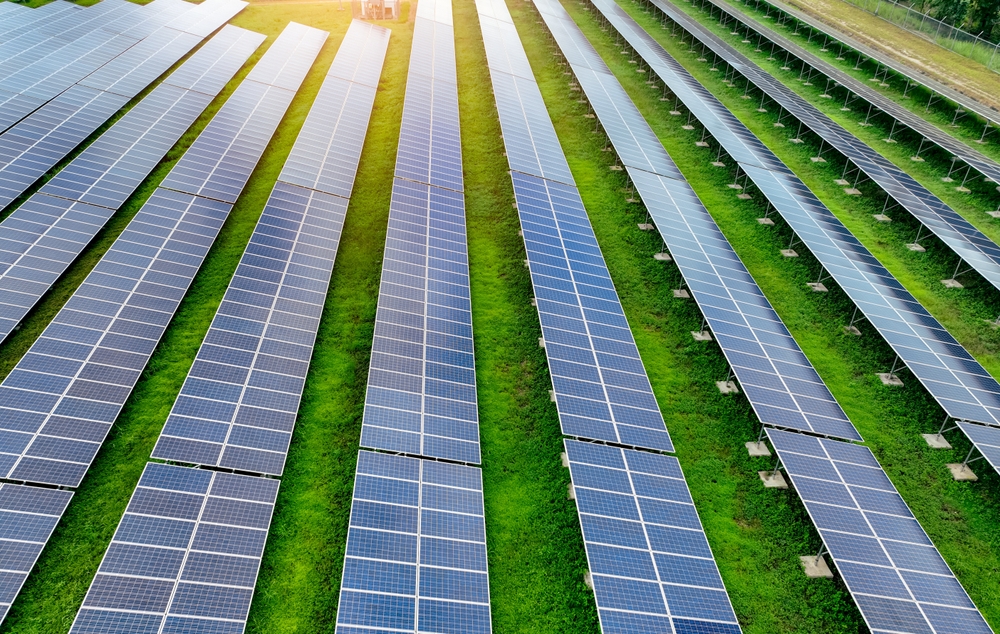
Solar Energy’s Unstoppable Ascendancy: The Role of Battery Storage in Growth
Solar energy’s unstoppable ascendancy, largely caused by costs continuing to fall and deployment accelerating, is no longer a matter of if—it is a matter of how fast.
The global energy landscape is undergoing a seismic shift as solar power has reached a scale and momentum that few anticipated. As costs continue to plummet and deployment accelerates, solar is transforming power markets, cutting reliance on fossil fuels, and reshaping geopolitics. And with batteries now scaling at an unprecedented rate, the world is on the cusp of an energy revolution where solar and storage together form an unstoppable force.
The rise of solar power is no longer a distant future—it is happening now, at an unprecedented pace and scale. Global solar power capacity reached one terawatt (TW) in 2022 after decades of growth but reached two TW only two years later, in 2024. No other electricity source has expanded so rapidly in history. Doubling every three years, solar has become the dominant source of new power, outpacing fossil fuels and securing its place as the engine of the energy transition.
According to Ember’s Global Electricity Review, solar added a record 474 terawatt-hours (TWh) of electricity worldwide in 2024, more than three times as much as coal (+149 TWh) and almost five times as much as gas (+103 TWh). Solar has now been the largest source of new electricity globally for three years in a row and has been the fastest growing for twenty years straight. China added twice as much solar electricity as coal in 2024, and in the United States, solar outpaced gas growth.
Cheap solar power is upending energy economics. Without solar, global fossil generation would be twelve percent higher than it is today. In China, the world’s largest coal consumer, solar alone prevented an estimated 783 TWh of additional coal-fired power last year—without it, the country’s coal generation growth over the past five years would have been fifty percent larger. In the European Union, where the energy crisis following Russia’s invasion of Ukraine spurred an accelerated rollout of renewables, solar has rapidly replaced fossil fuels.
The New Solar Superpowers
China – the undisputed solar superpower – accounts for thirty-nine percent of global solar generation. However, the growth of solar is not confined to a few pioneering nations; it is a worldwide phenomenon. Forty-two countries now generate at least a tenth of their electricity from solar. Over the past five years, ninety-nine countries have doubled their solar generation, with emerging economies and industrial powerhouses alike integrating solar into their grids.
New solar superpowers are emerging. In 2022, India overtook Japan to become the third-largest solar generator in the world. In 2024, Brazil overtook Germany to become the fifth-largest solar generator. Alongside China, this means that BRICS members now represent three of the world’s top five solar-generating countries.
Solar is now so cheap that large markets can emerge in the space of a single year – as evidenced in Pakistan in 2024. The low-cost, fast-to-build nature of solar power can transform electricity systems at an unprecedented rate, bringing into sharp relief the need for updated system planning and regulatory frameworks. There are signs in other regions that more rapid change could be around the corner: countries in Africa and the Middle East saw record solar imports in 2024, driven by the technology’s falling costs and ease of deployment.
At the forefront, countries such as Chile and Hungary demonstrate that high shares of solar are feasible, with solar contributing over twenty percent of electricity in both nations. In the United States, California and Nevada both surpassed thirty percent annual share of solar in their electricity mix for the first time in 2024. As countries reach ever-higher shares of solar, the need to shift some of that cheap, abundant power to after nightfall becomes essential – and that’s where battery storage and other forms of clean flexibility come into play.
Battery Storage is a Game Changer
The plummeting cost of battery storage is causing installations to skyrocket, further bolstering the potential of solar power. The average price of lithium-ion battery pack fell twenty-percent in 2024 alone, marking the biggest single-year cost reduction since 2017. Global battery storage capacity nearly doubled thanks to installations last year, as sixty-nine gigawatts (GW) was added. Storage is now scaling at a pace once thought unimaginable, ensuring that solar’s generation can be time-shifted to when it is most needed.
The impact is already evident in power markets at the frontier of the transition. In California, batteries now meet nearly a fifth of daily peak demand, displacing gas generation in the crucial evening hours. In Abu Dhabi, the world’s first twenty-four-hour solar PV project—combining five GW of solar with nineteen gigawatt-hours (GWh) of battery storage—will soon deliver continuous, dispatchable renewable power, eliminating the need for fossil fuel backup. As more countries integrate batteries, the vision of round-the-clock solar power is becoming a reality. The benefits of investing in solar and batteries are hard to ignore.
The rise of solar and batteries is unstoppable. The old model of a commodity-based fossil-fuel-based power system is being dismantled and is now being replaced by a new paradigm where low-cost renewable technologies dominate. With costs continuing to fall and deployment accelerating, solar and batteries will reshape electricity systems faster than policymakers, markets, and even energy incumbents expect. The energy transition is no longer a matter of if—it is a matter of how fast.
Euan Graham is an electricity and data analyst at Ember. Nicolas Fulghum is a senior data analyst at Ember.
Image: Shutterstock/Fahroni